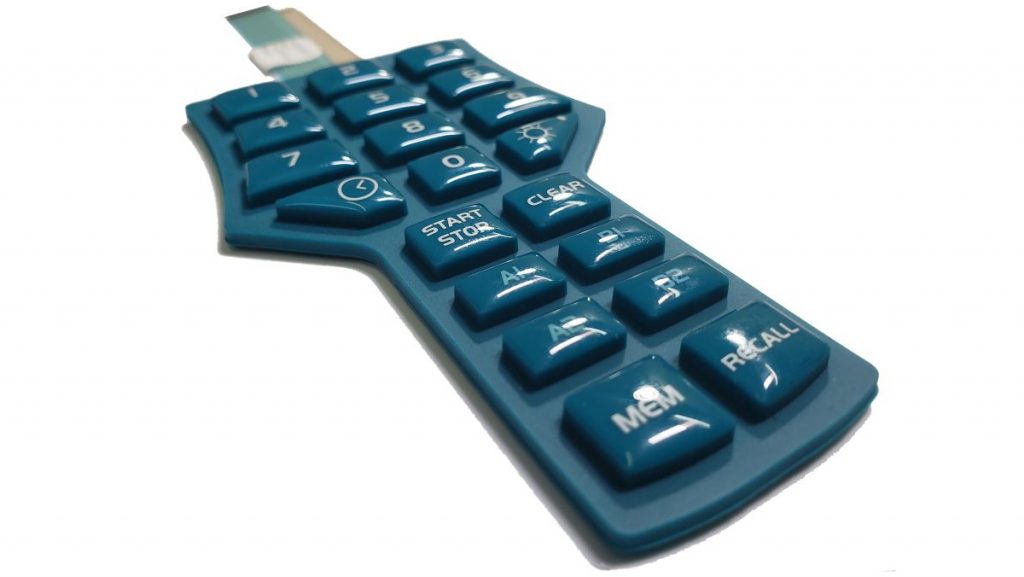Contact
Write to Us And We Would Be Happy to Advise You.
Do you have any questions, or would you like to speak directly with a representative?
By hqt

As a product designer or engineer, you know how important it is to choose the right keypad for your device. You need a keypad that is reliable, durable, and easy to use. That’s where elastomeric keypads come in. In this guide, we will discuss the benefits of elastomeric keypads, the types available, factors to consider when choosing one, design considerations, customization options, testing and quality assurance, and more.
Elastomeric keypads are a type of interface used in electronic devices. They are made of a flexible material that can be molded into a variety of shapes and sizes. Elastomeric keypads are designed to provide a tactile feedback when pressed, which makes them easy to use and reliable. They are commonly used in devices such as remote controls, medical equipment, and industrial machinery.
Elastomeric keypads offer several benefits over other types of keypads. They are durable, reliable, and easy to use. They can withstand a wide range of temperatures and are resistant to moisture, chemicals, and UV light. They also offer a high level of customization, which makes them ideal for a variety of applications.
Another benefit of elastomeric keypads is their tactile feedback. When a button is pressed, the keypad provides a soft, rubbery response that confirms the action has been taken. This feedback makes it easy for users to navigate the device without having to look at the keypad.
There are several types of elastomeric keypads available, including single-shot, double-shot, and laser-etched keypads. Single-shot keypads are made from a single mold and are the most cost-effective option. Double-shot keypads are made from two molds and offer a higher level of customization. Laser-etched keypads are created using lasers to etch the keypad surface, which provides a high level of detail and customization.
When choosing an elastomeric keypad, there are several factors to consider. The first is the environment in which the keypad will be used. If the device will be exposed to harsh conditions, such as high temperatures or moisture, a keypad with a high level of resistance is necessary.
Another factor to consider is the level of customization needed. If the device requires a specific layout or design, a double-shot or laser-etched keypad may be necessary. The number of buttons needed is also important, as well as the size and shape of the keypad.
Design considerations for elastomeric keypads include the layout, shape, and color of the keypad. The layout should be intuitive and easy to use, with buttons placed in a logical order. The shape of the keypad should be ergonomic, with buttons placed in a comfortable position for the user. The color of the keypad is also important, as it can affect the device’s overall appearance.
Elastomeric keypads offer a high level of customization, with options for different materials, colors, and shapes. They can also be customized with logos, symbols, and other graphics. Double-shot and laser-etched keypads offer even more customization options, with the ability to create complex designs and layouts.
Testing and quality assurance are important for ensuring that elastomeric keypads meet the necessary standards for durability and reliability. Tests can include environmental testing, such as exposure to high temperatures or moisture, as well as testing for wear and tear. Quality assurance measures can include visual inspections, as well as testing for functionality and tactile feedback.
Elastomeric keypads offer several advantages over other types of keypads, such as membrane and mechanical keypads. They are more durable and reliable than membrane keypads, and offer a higher level of customization. They are also more cost-effective than mechanical keypads, which require more complex components.
To ensure the longevity of elastomeric keypads, proper maintenance and care is necessary. Keypads should be cleaned regularly with a soft, damp cloth to remove dirt and debris. Harsh chemicals should be avoided, as they can damage the keypad surface. If a button becomes stuck or unresponsive, the keypad should be inspected for damage or wear.
Elastomeric keypads are commonly used in a variety of devices, such as remote controls, medical equipment, and industrial machinery. They are also used in consumer electronics, such as calculators and gaming controllers. Their flexibility and durability make them ideal for use in devices that require a high level of customization and reliability.
Elastomeric keypads offer a high level of durability, reliability, and customization, making them an ideal choice for a variety of applications. When choosing an elastomeric keypad, it is important to consider the environment in which it will be used, as well as the level of customization needed. With proper maintenance and care, elastomeric keypads can provide years of reliable service.
Do you have any questions, or would you like to speak directly with a representative?